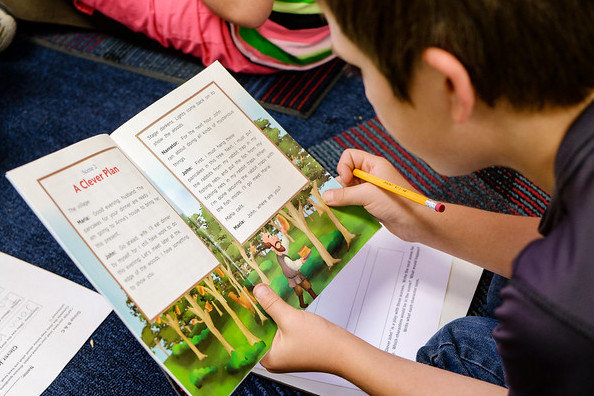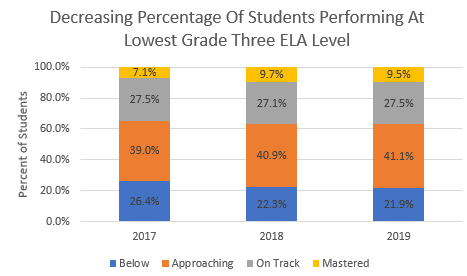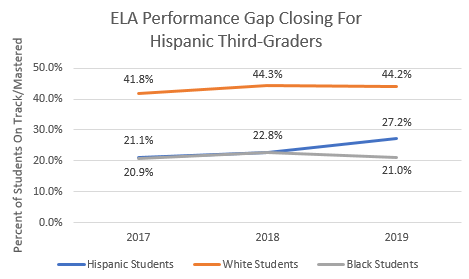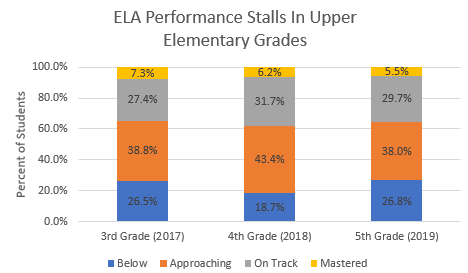
Learning to read well is a key milestone for students. Responding to research that links early literacy success with important high school, career, and life outcomes, Tennessee in 2016 set a goal for 75 percent of Tennessee students to be on track or mastered in third-grade English language arts (ELA).
Three years later, the 2019 TNReady grade 3 ELA results show Tennessee has not yet made widespread, sustained progress for students at this critical milestone.
An Opportunity To Lead The Nation
The 2019 TNReady results show that only 36.9 percent of Tennessee third-graders are on track or mastered in English language arts, improving by a little over 2 percentage points since 2017. In the nearly 1,000 public schools serving third-grade students in Tennessee, only 17 schools have met the statewide goal of 75 percent of students scoring on track or mastered in third-grade English language arts. When considering the schools with 50 percent scoring on track or mastered, there are only 182 schools.
Across the nation and as measured by fourth-grade reading achievement on the 2017 National Assessment for Educational Progress (NAEP), only a third of students nationally earned a score of proficient, while national leader Massachusetts saw 51 percent of its students earn a score of proficient. While TNReady and NAEP are different measures of student learning, the takeaway remains the same: Tennessee has a long way to go in being a leader on early literacy.

Lowest Performance Category Continues To Shrink
One sign of improvement comes from the consistent decline in students scoring in the “Below” category. Since 2017, there has been a 4.5 percentage point drop in students in the lowest performance category. However, this still means that one in five third-graders perform at this lowest category.

Achievement Gaps For Hispanic Students Narrow
As discussed in the first blog of this three-part series, Tennessee has made slight movement in the narrowing of achievement gaps. One such instance is seen for Hispanic students who have made 6.1 percentage points of growth since 2017. However, the achievement gaps in third-grade English language arts between black students and white students has seen little change.

In Later Grades, Students Are Not Catching Up
Third-grade literacy is an important foundation for students’ learning throughout elementary and beyond. The students who were in third grade in 2017 are now in fifth grade, and when we examine state-level data, we see little change in the percentage of those students who score on track or mastered in English language arts. While state-level data does not allow us to explore student-level questions (i.e. whether the same students maintain their on-track status through fifth grade), this data suggest that students are not receiving the support needed to change their trajectories after third grade.
Moreover, the percentage of students achieving mastery appears to decrease as students move through the upper elementary grades. As a result, 1,368 students lost ground by fifth grade, suggesting a lack of sustained rigor in these grades.

Tennessee must continue its focus on early literacy outcomes to provide an excellent education for all students. While the increased attention on early literacy is much needed, it is clear from the 2019 TNReady results that the state has a long way to go.
Recent research suggests that aligning teacher practice to the science of reading and effectively supporting educators to implement high-quality instructional materials will be essential levers for improvement in Tennessee. As we can see from the data, the stakes are high if more students do not reach and maintain this important learning milestone early in their education journeys.
Peter Tang is director of research at SCORE. Alexis Parker is a SCORE graduate fellow.
More Analysis On Tennessee’s 2019 TNReady Results:
